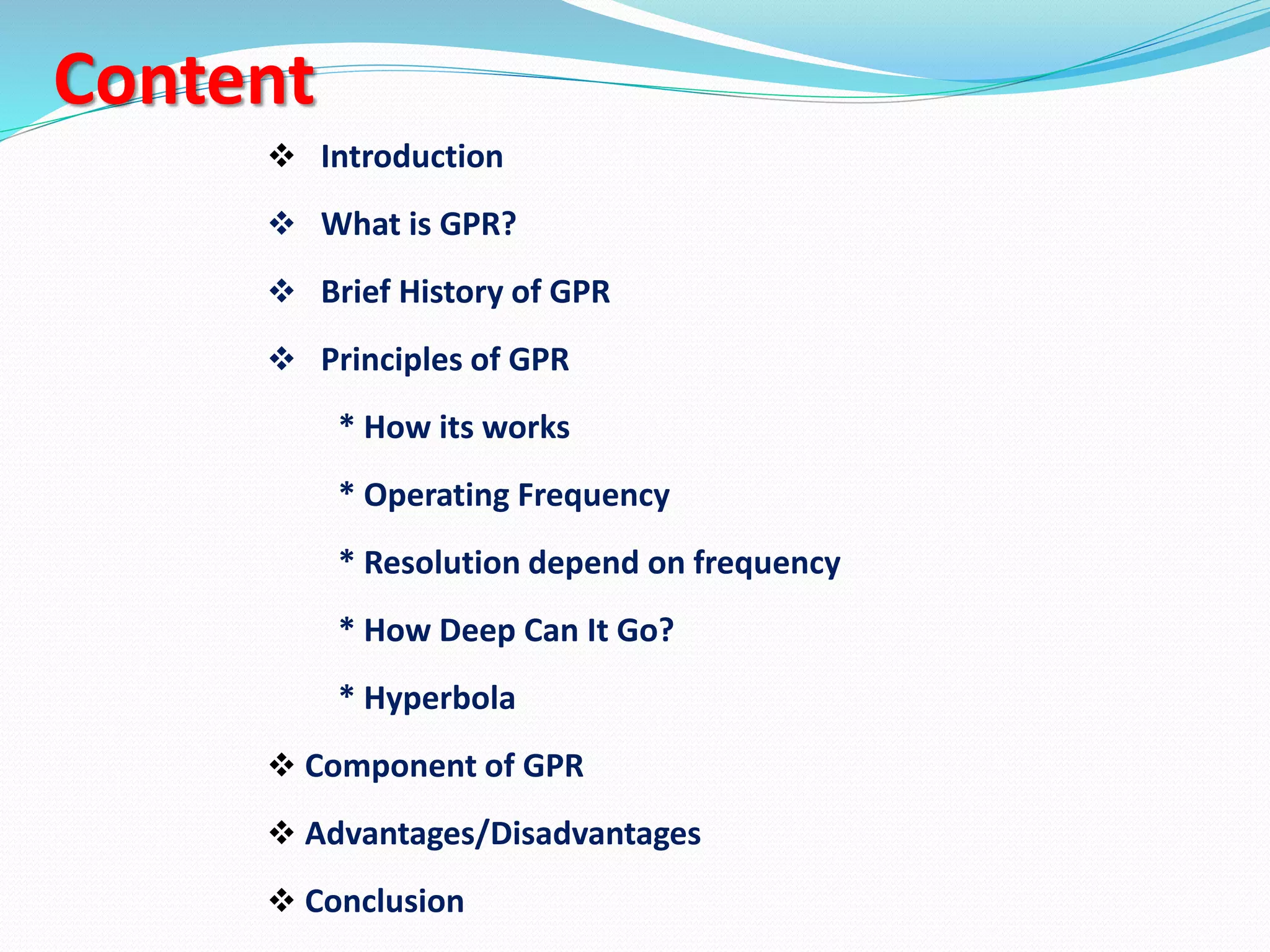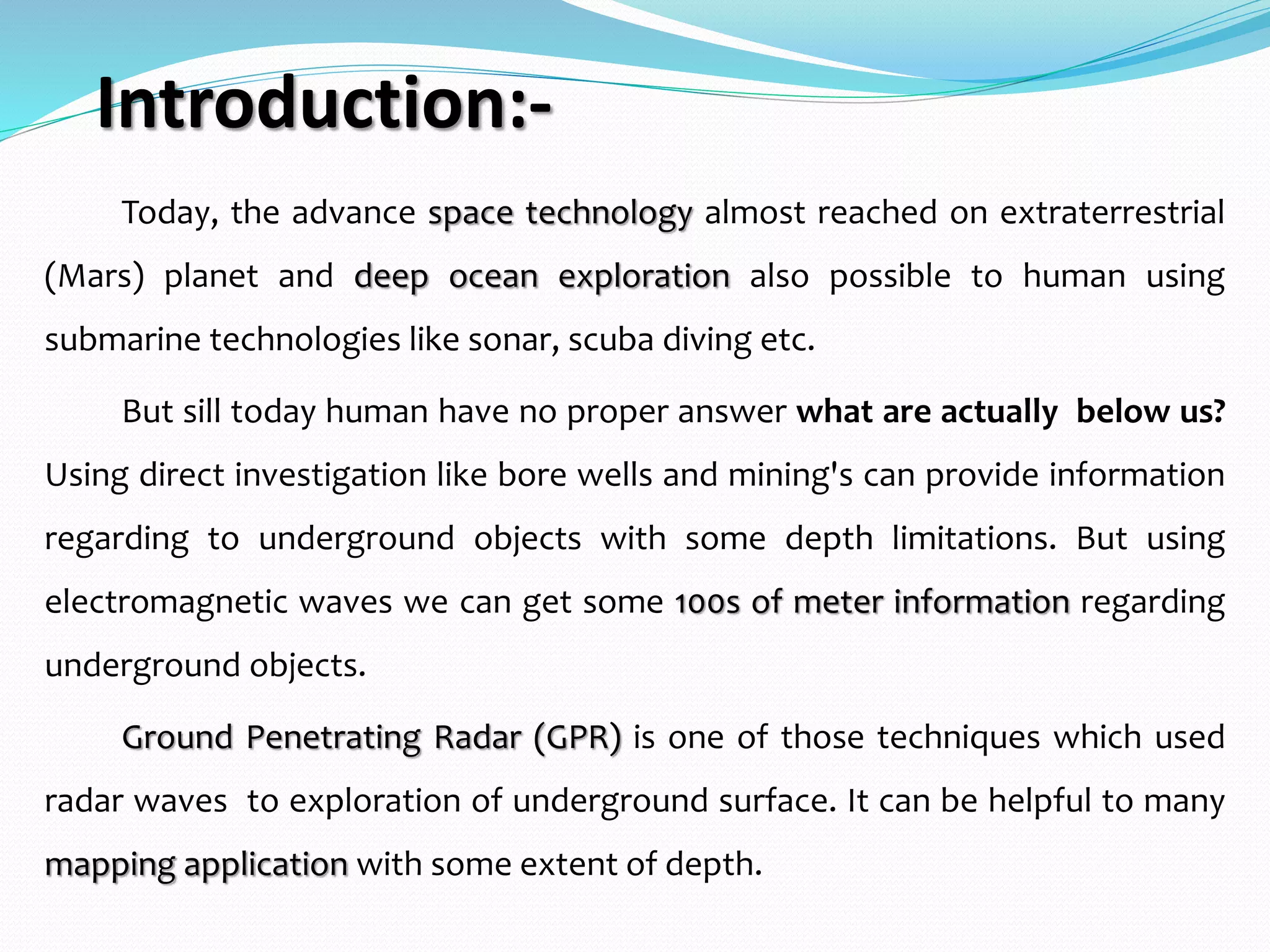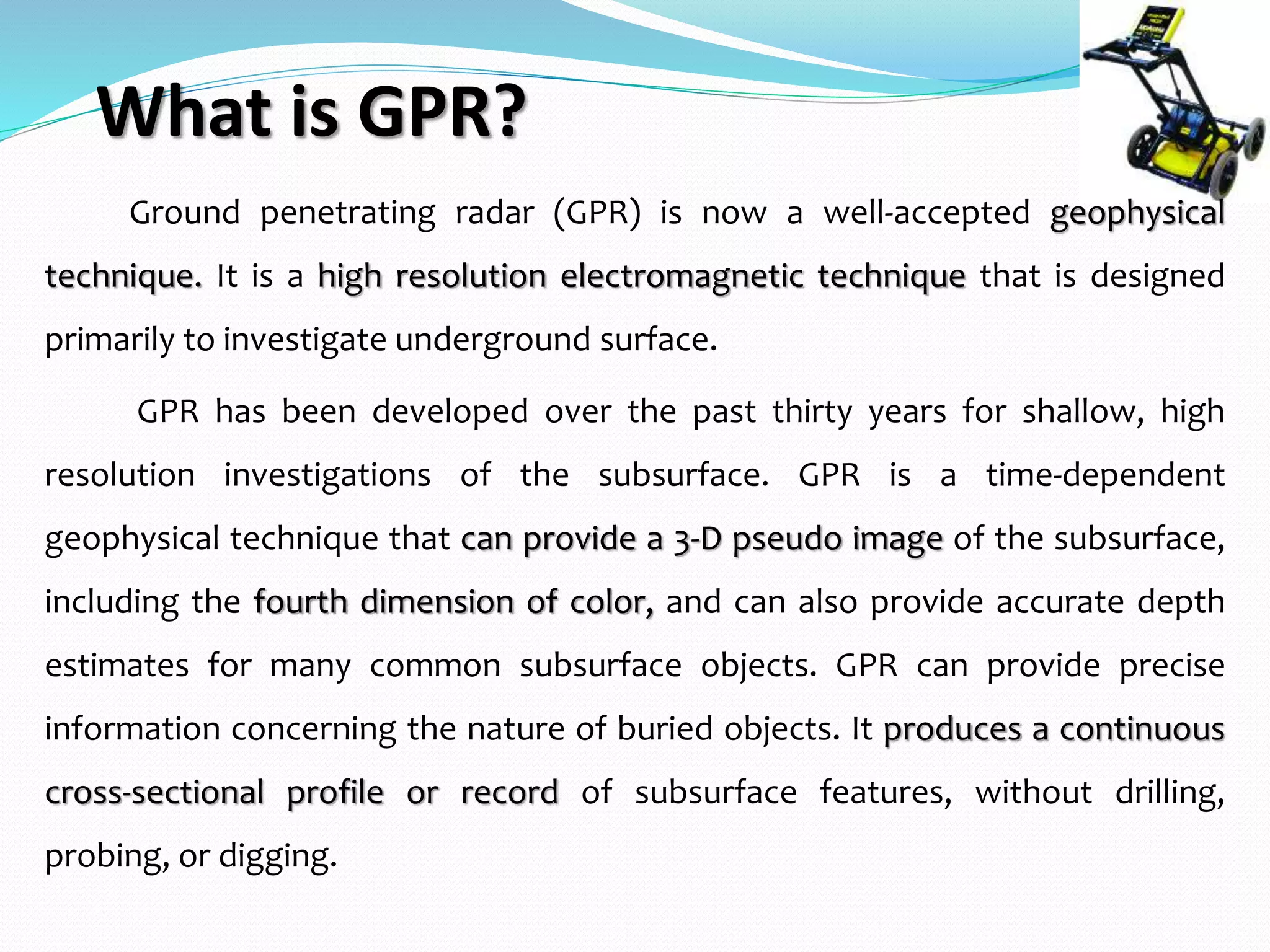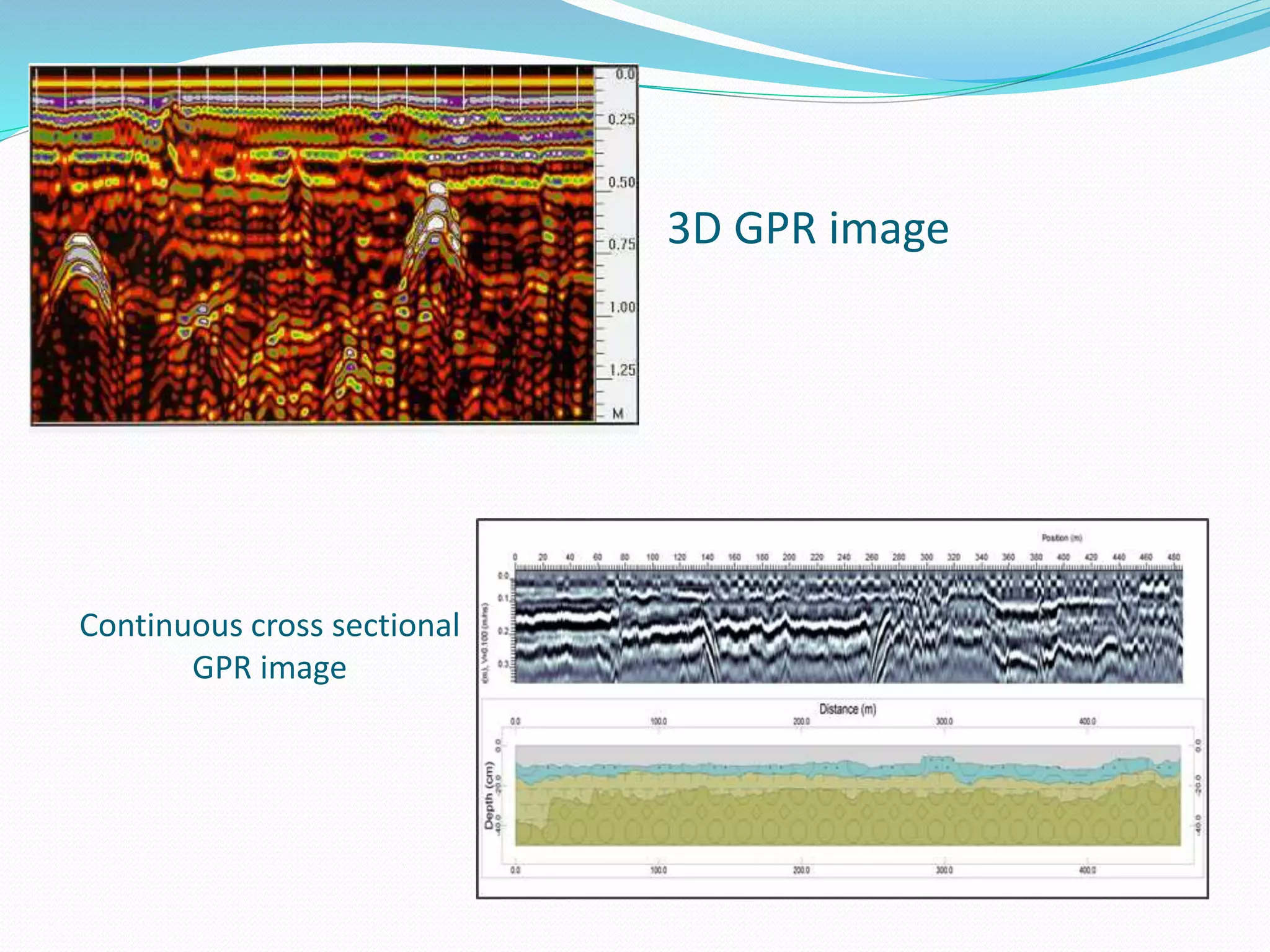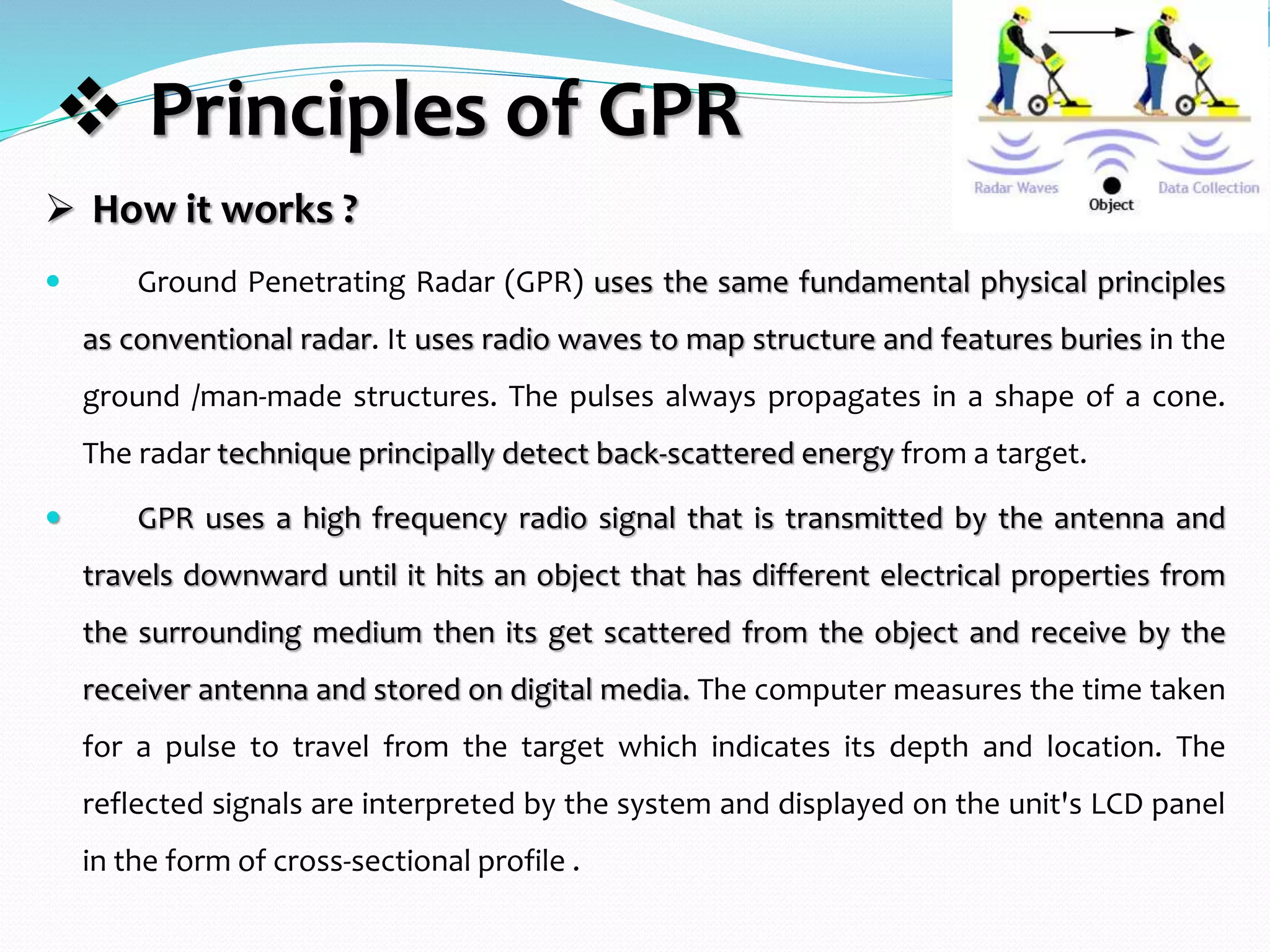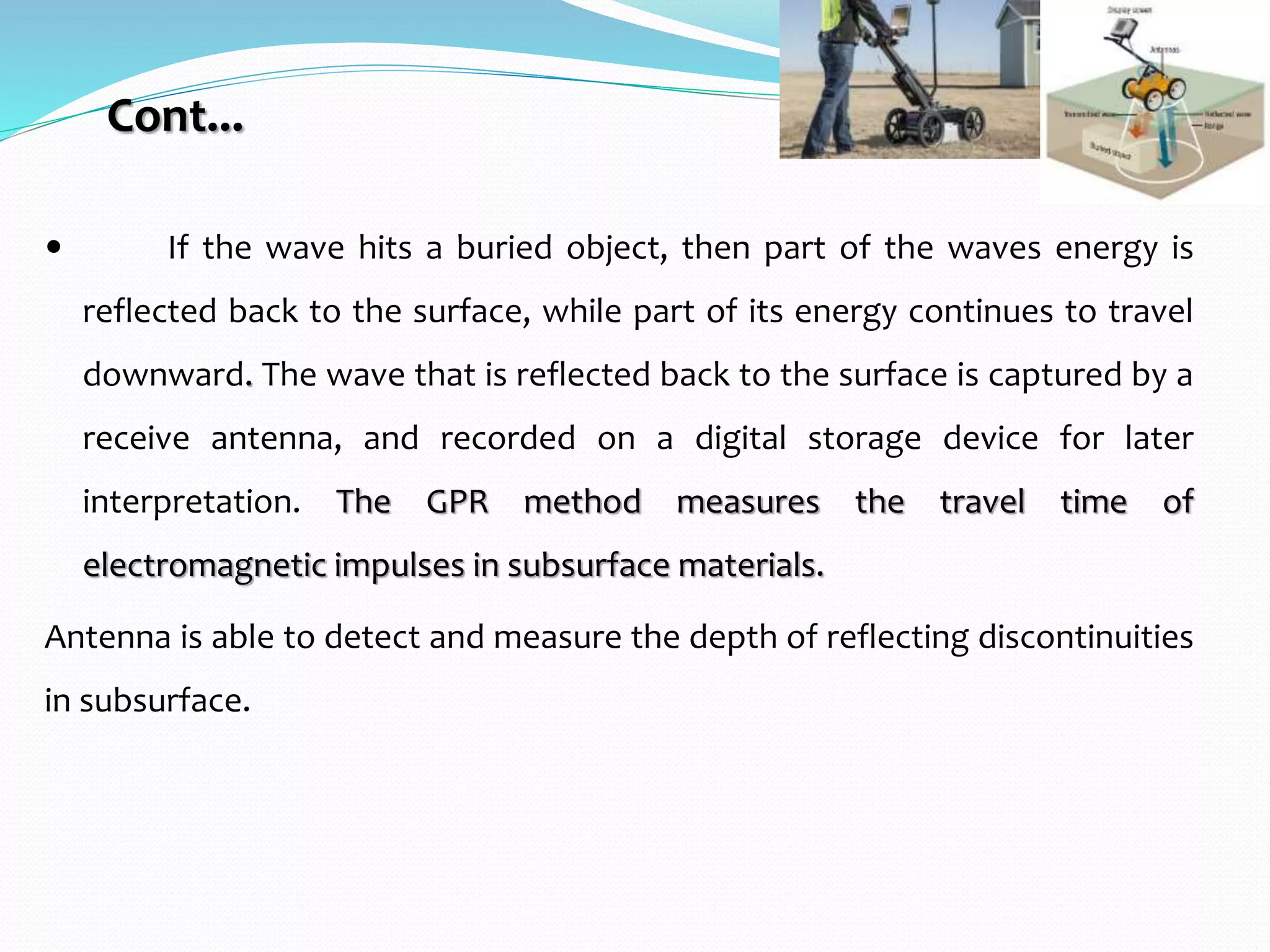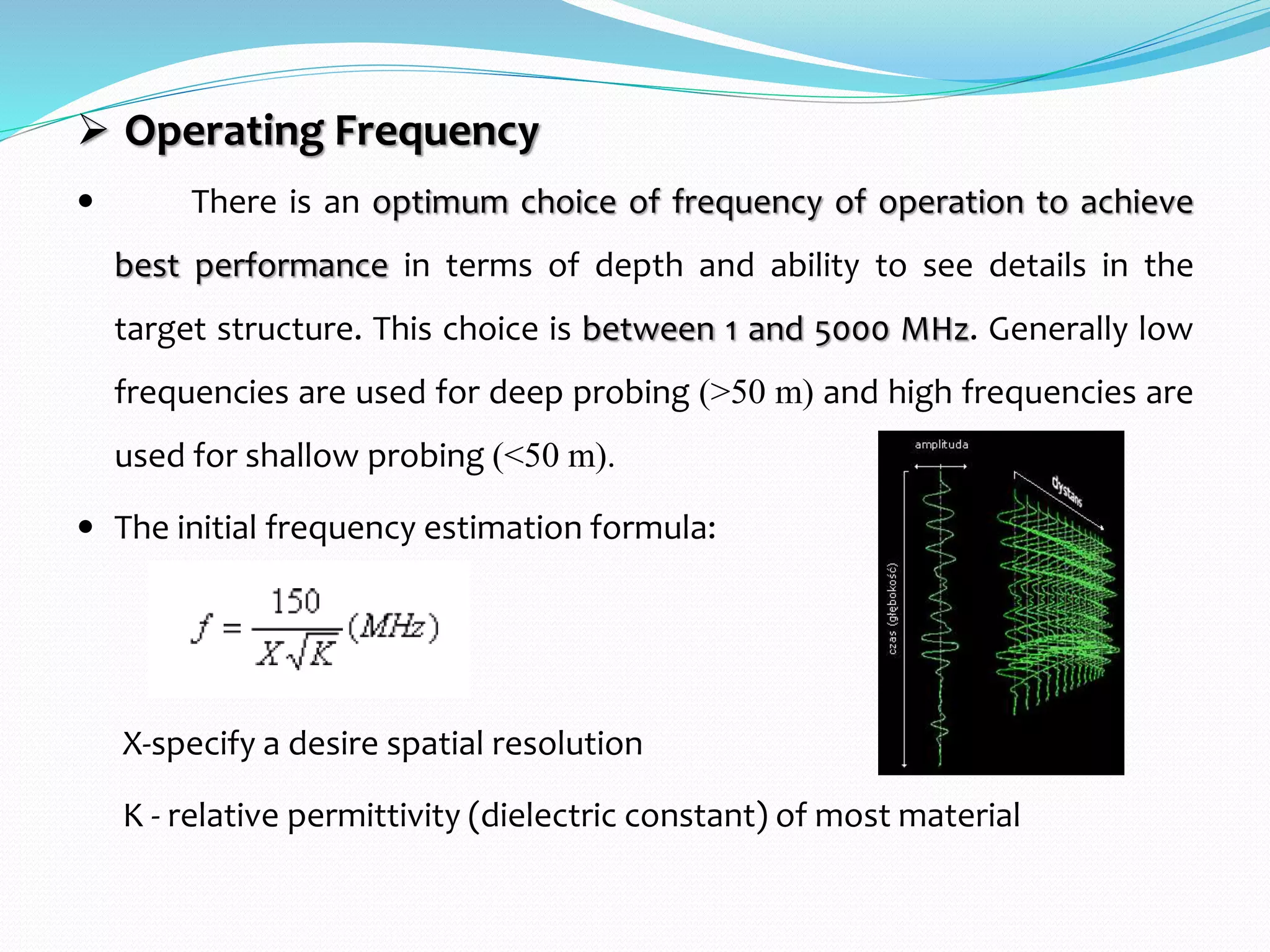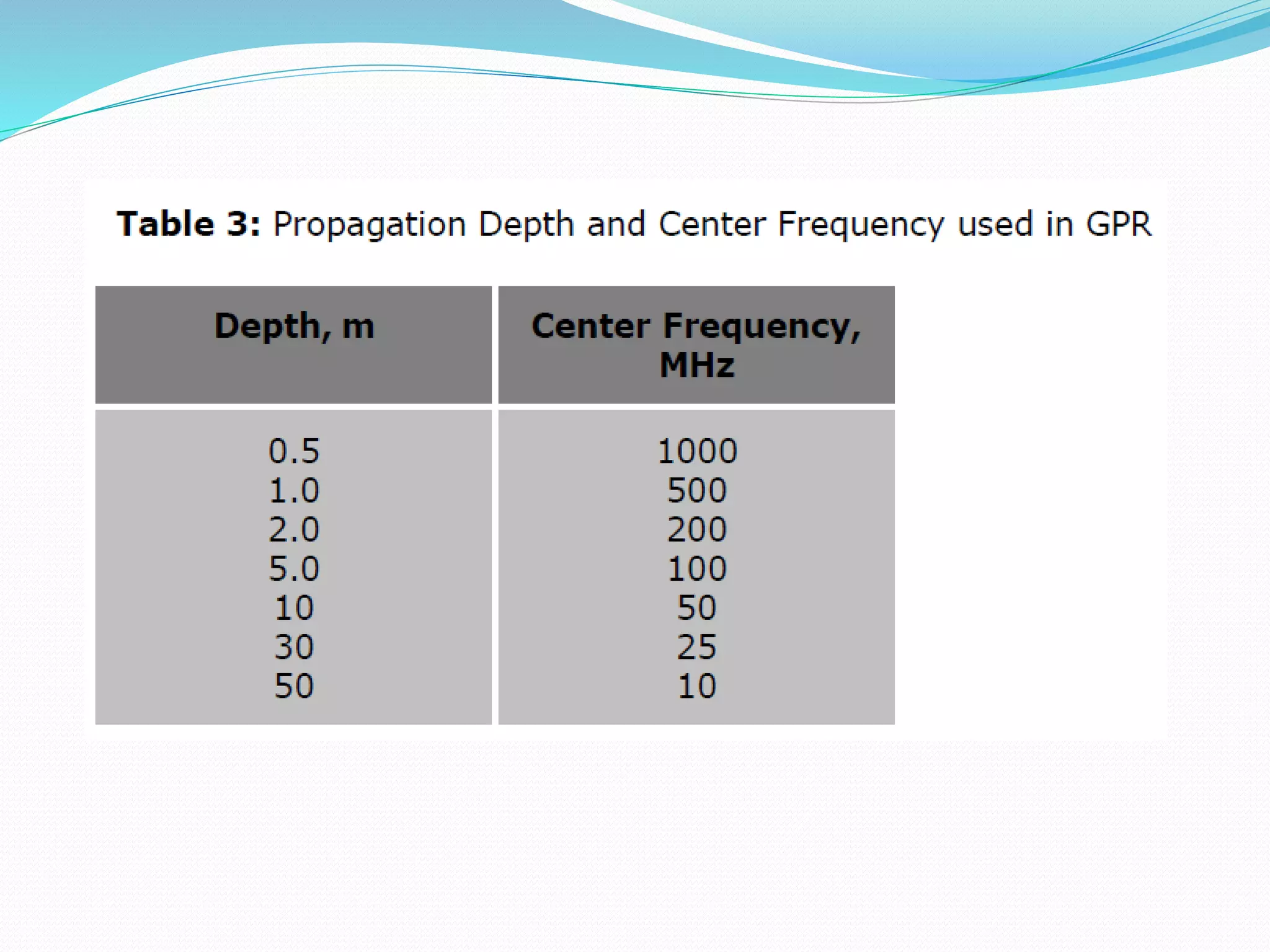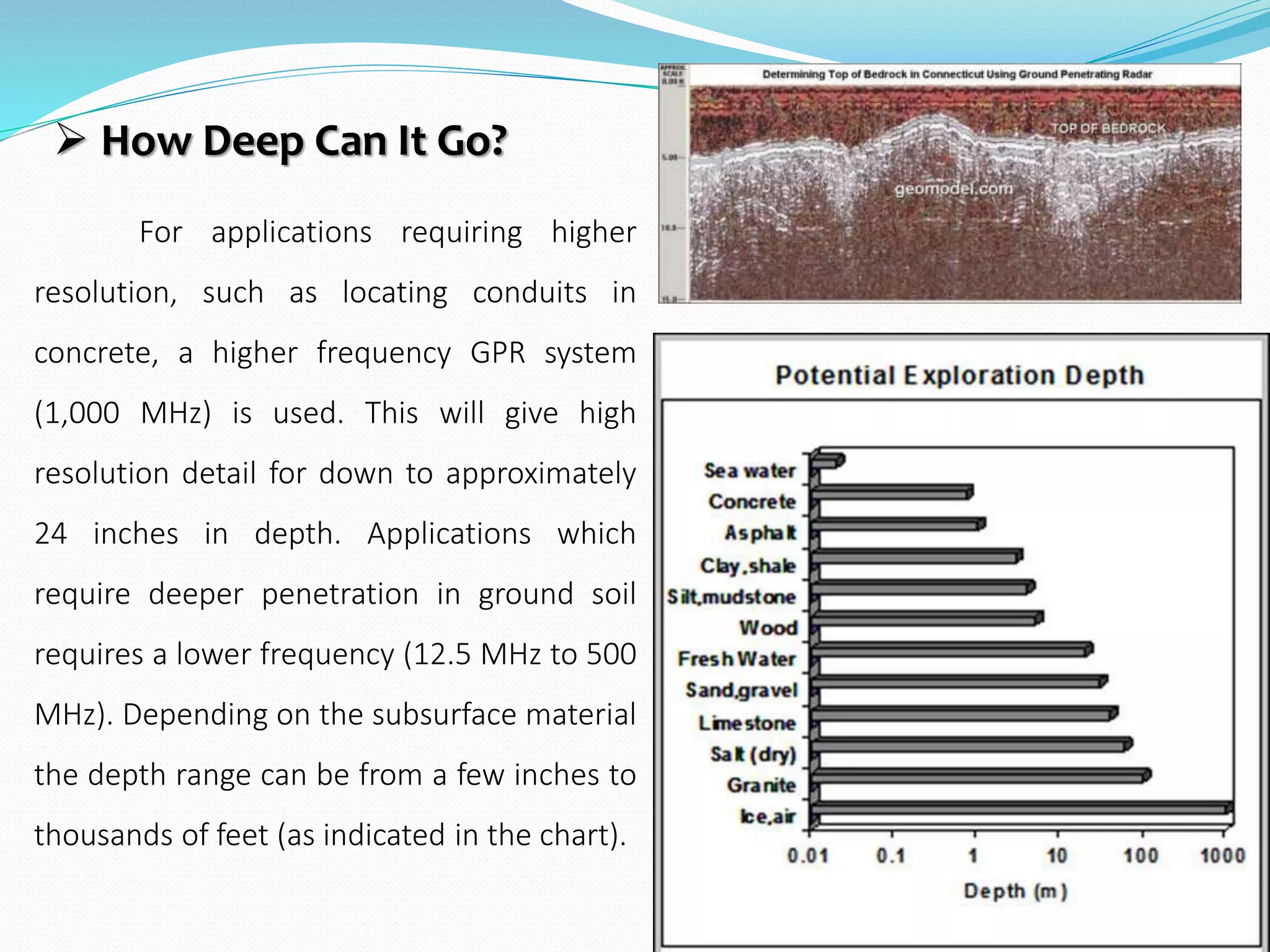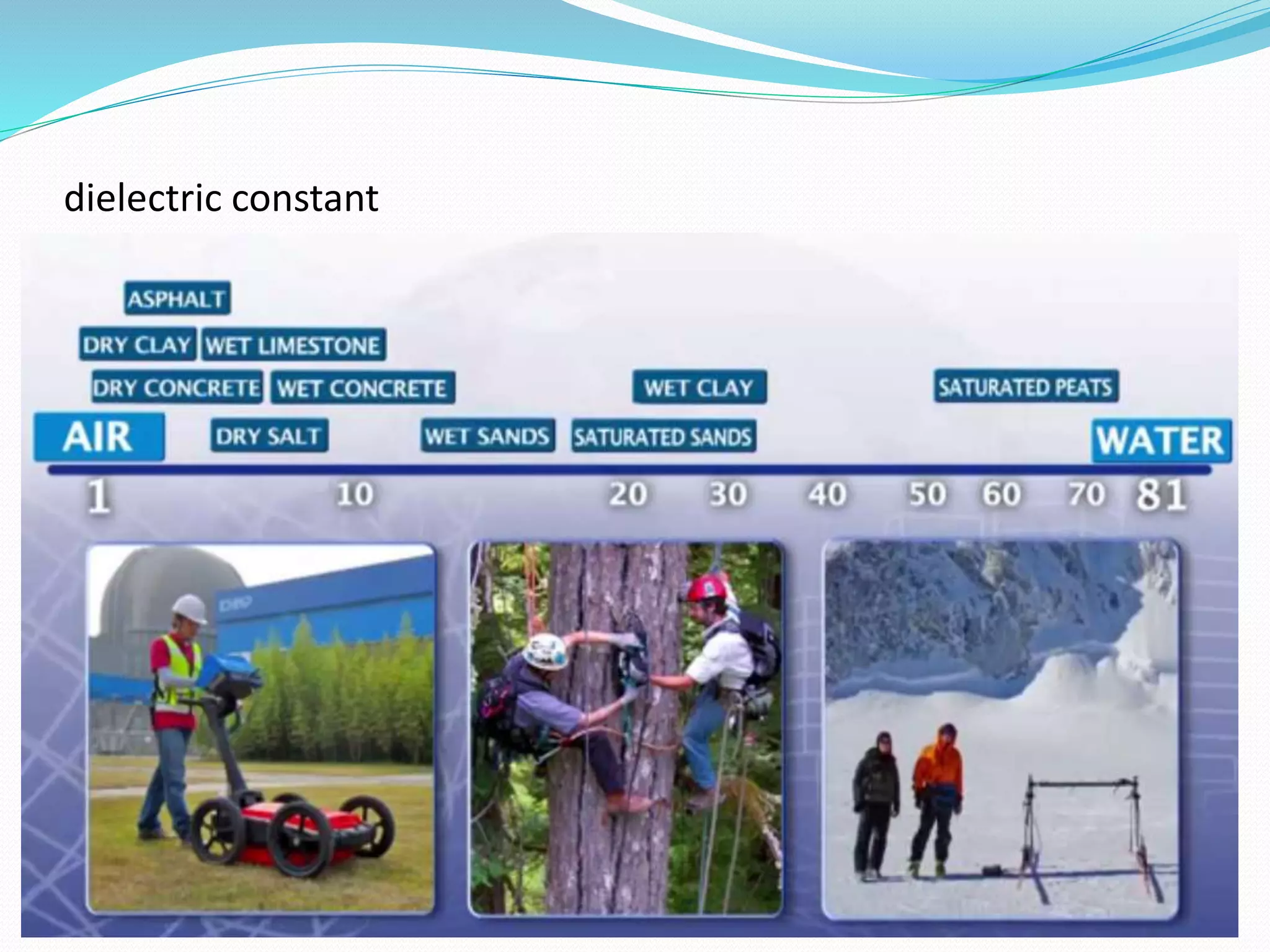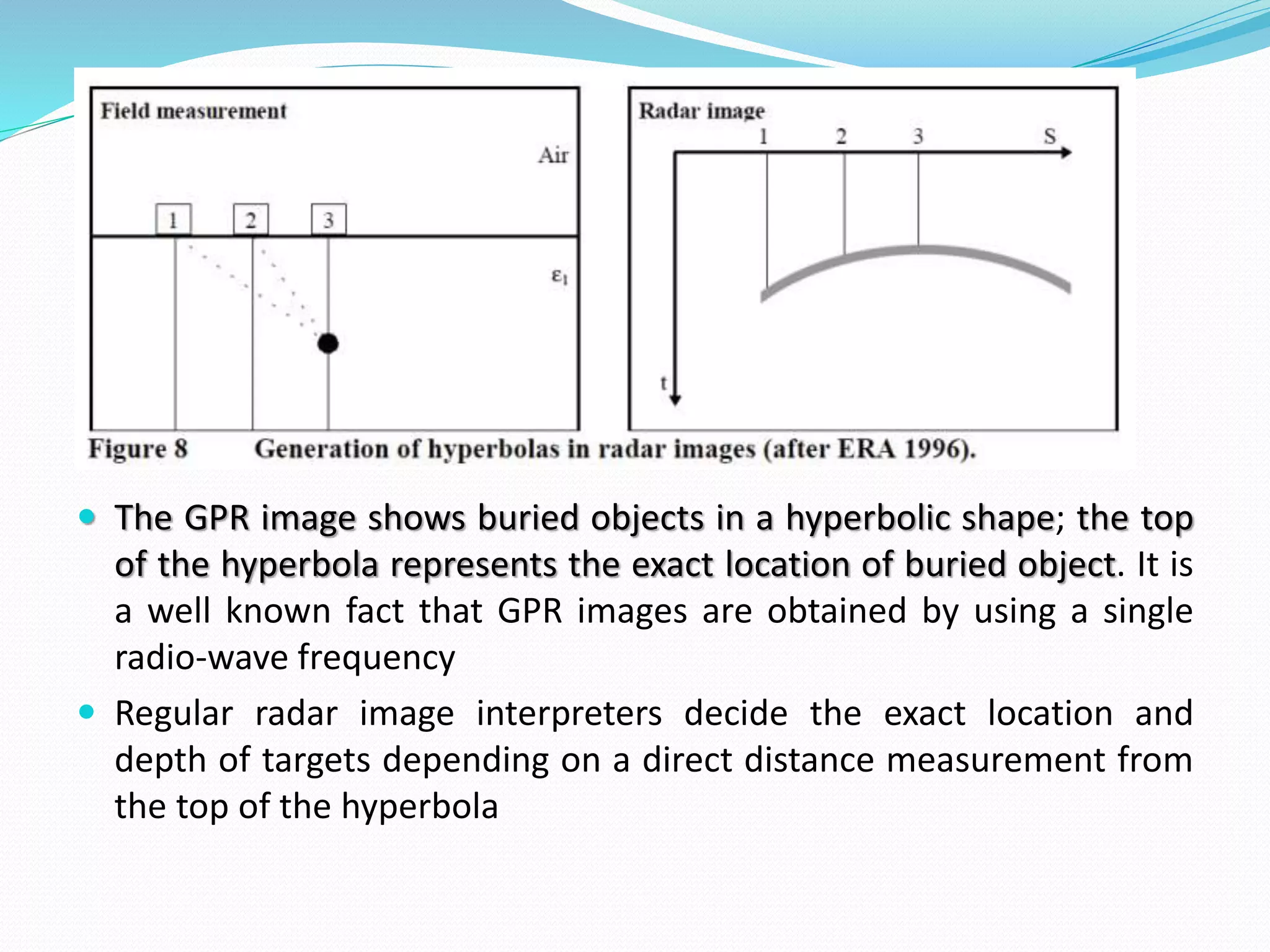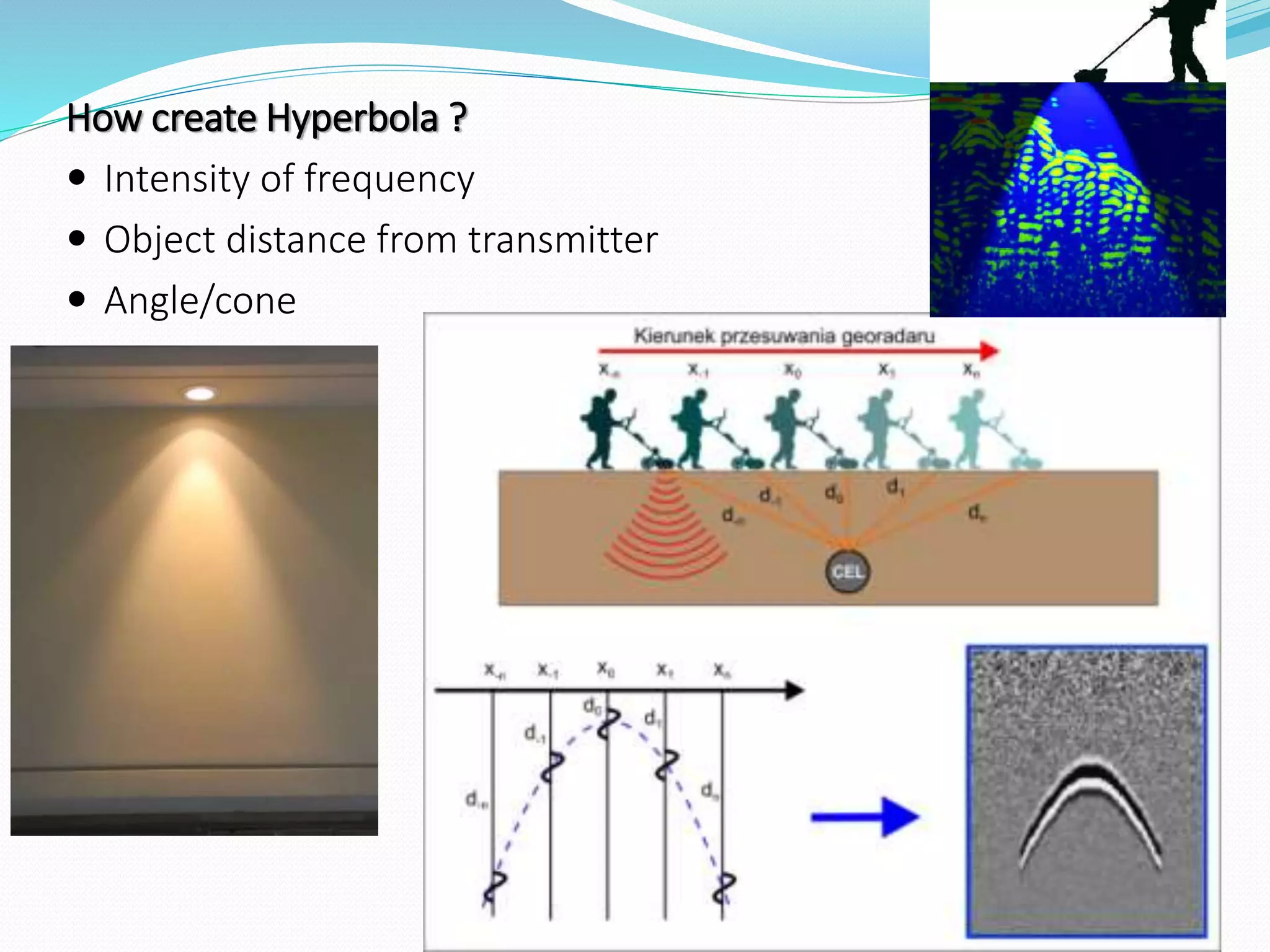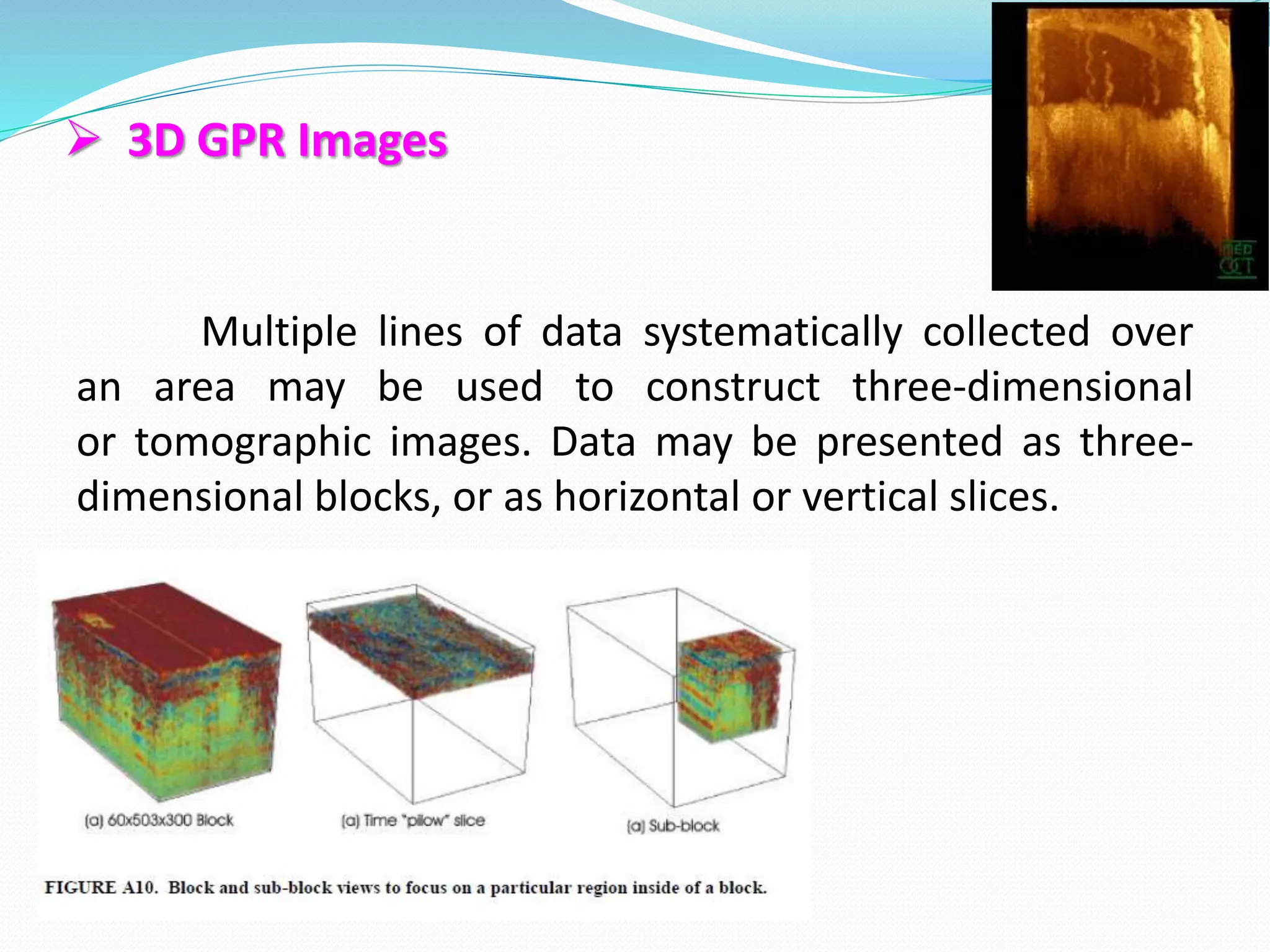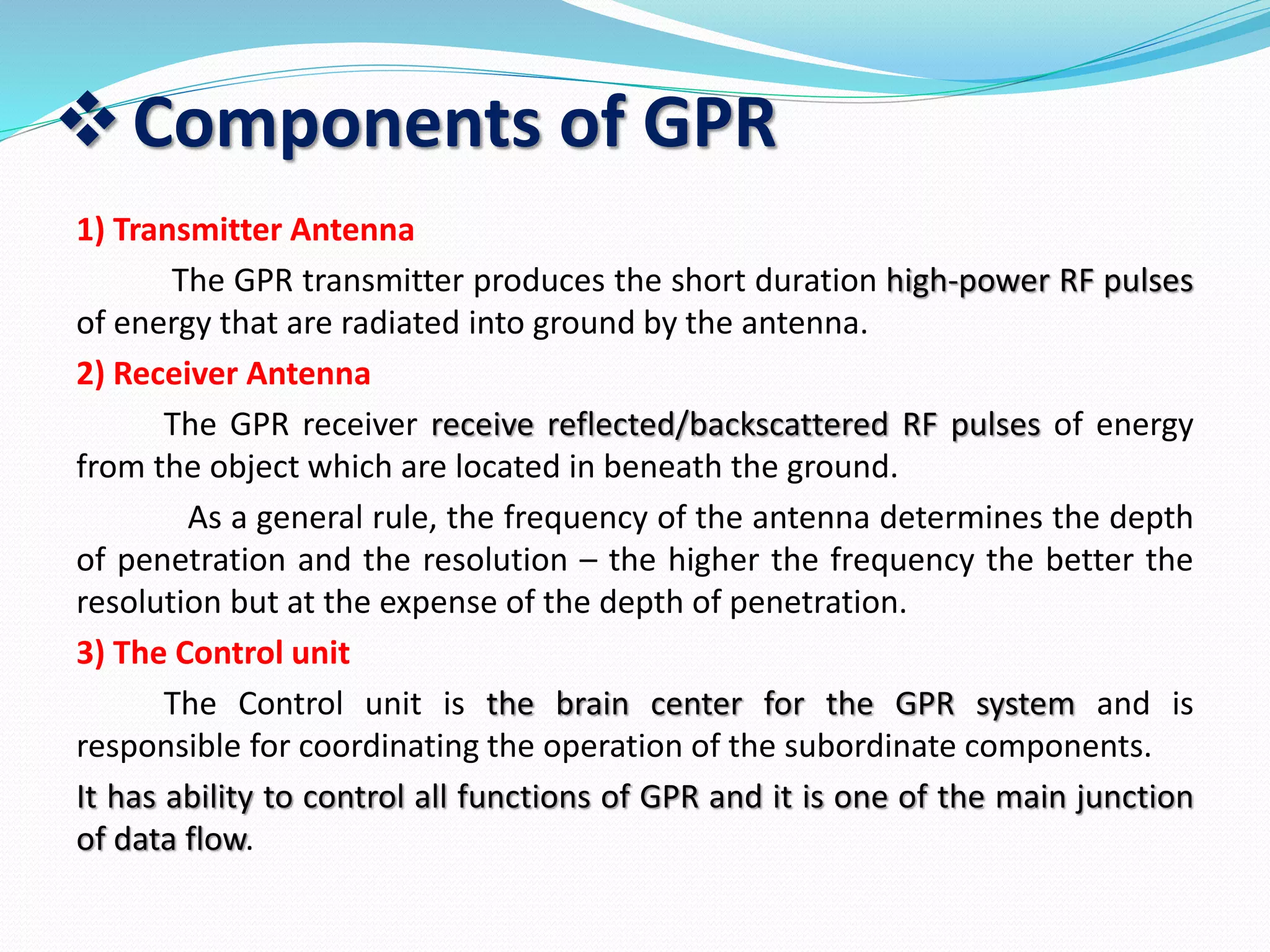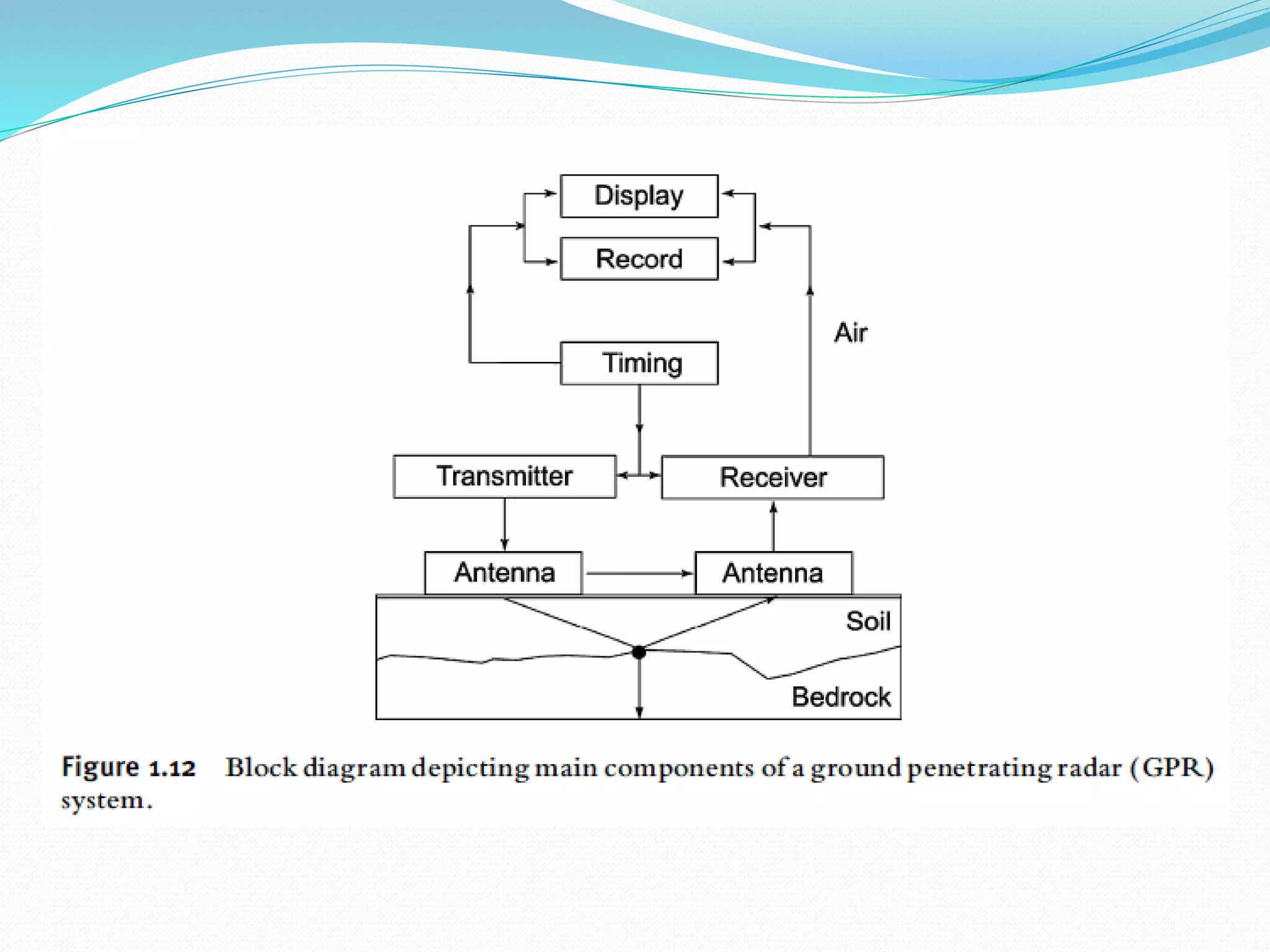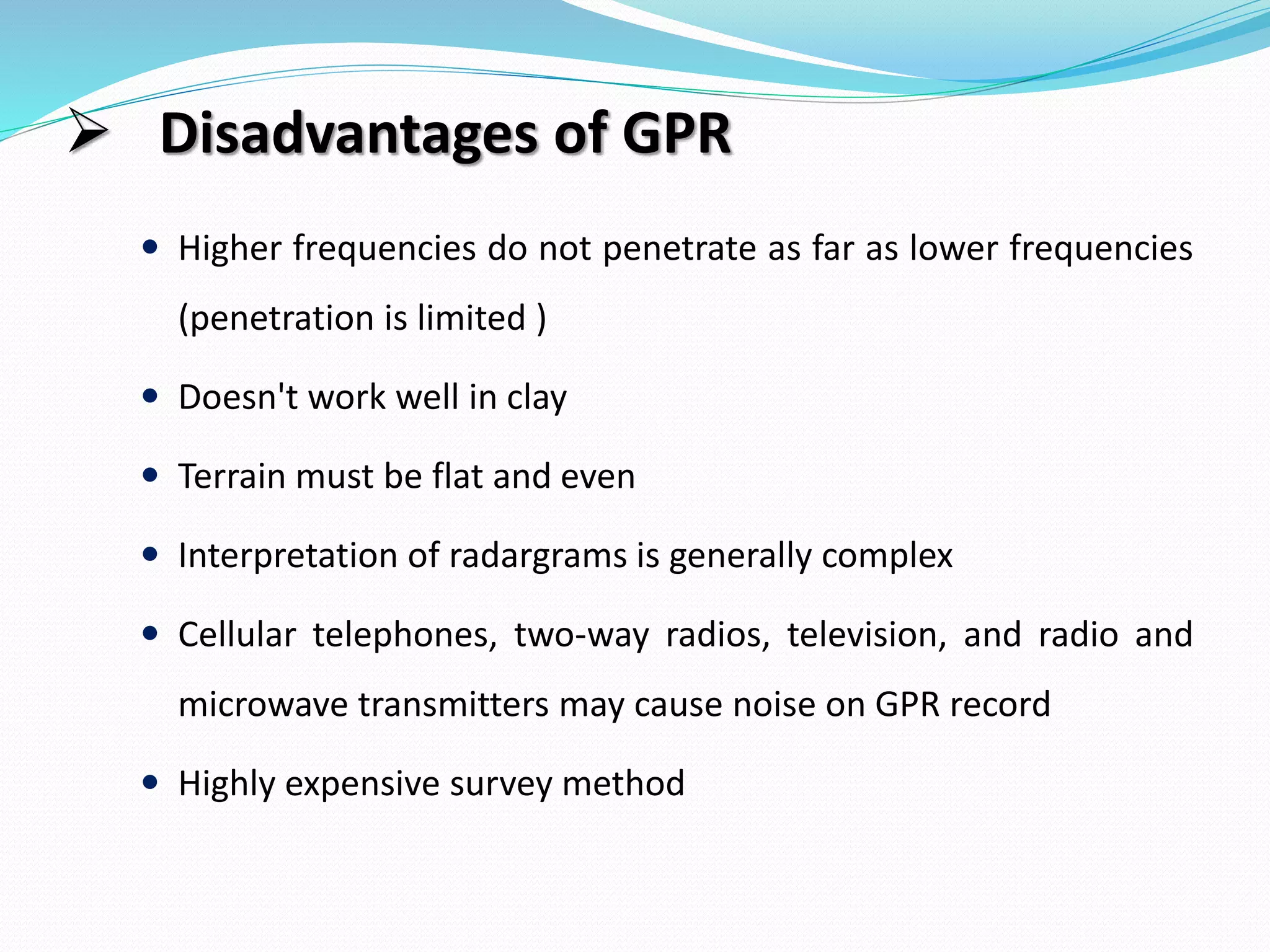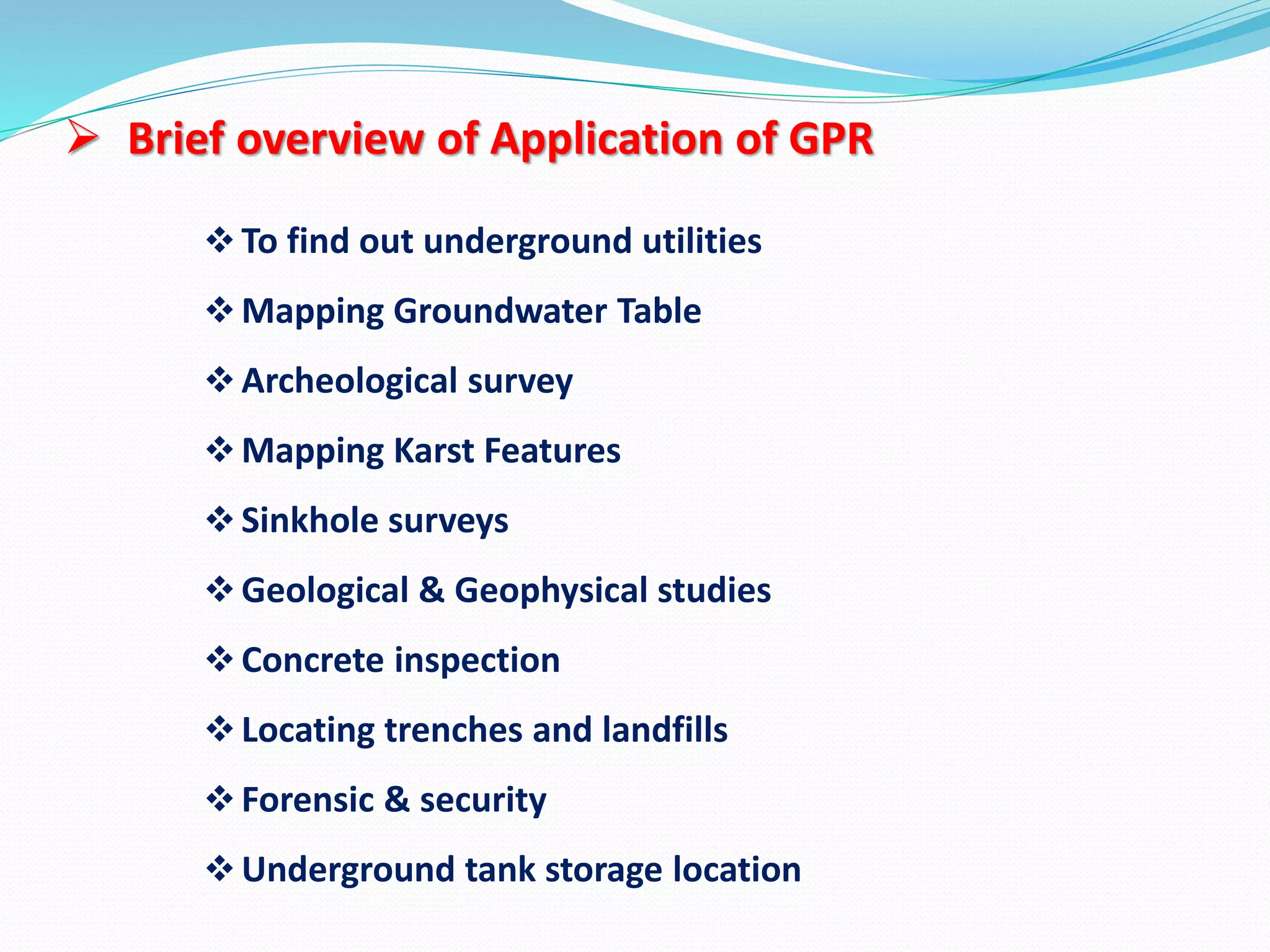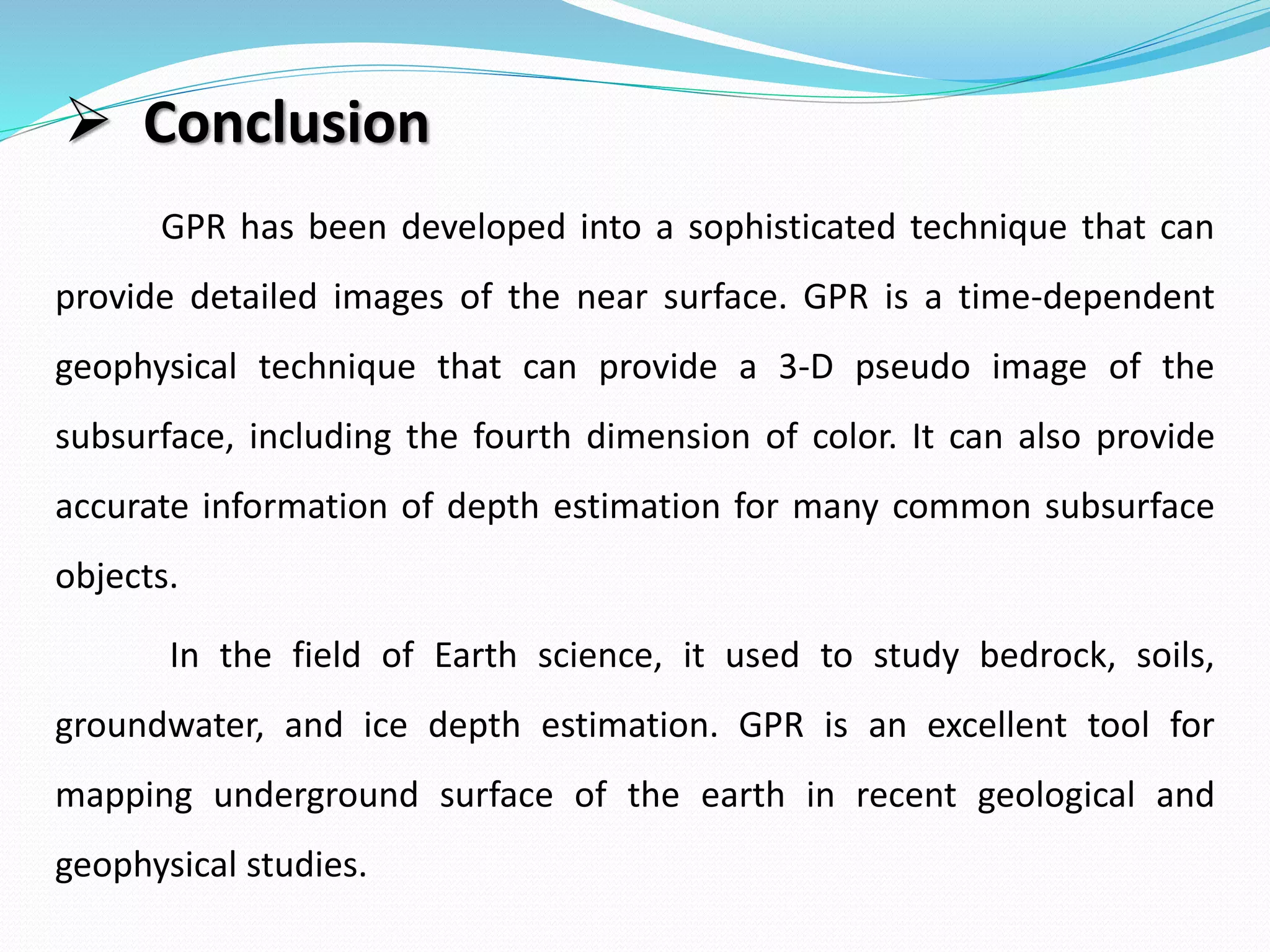Ground penetrating radar (GPR) is a geophysical method that uses radar pulses to image the subsurface. It can detect objects, changes in material, and voids or cavities underground. GPR works by transmitting electromagnetic pulses into the ground and measuring the time it takes for the pulses to reflect back to a receiver antenna. Different materials and objects underground cause different reflections that appear as hyperbolic patterns in GPR images. GPR systems consist of a transmitter antenna, receiver antenna, control unit and display. The frequency used depends on the desired depth of penetration and resolution needed. GPR has advantages of being non-invasive, fast, and able to provide 3D images of underground structures, but its effectiveness is limited by certain soil or terrain conditions.

